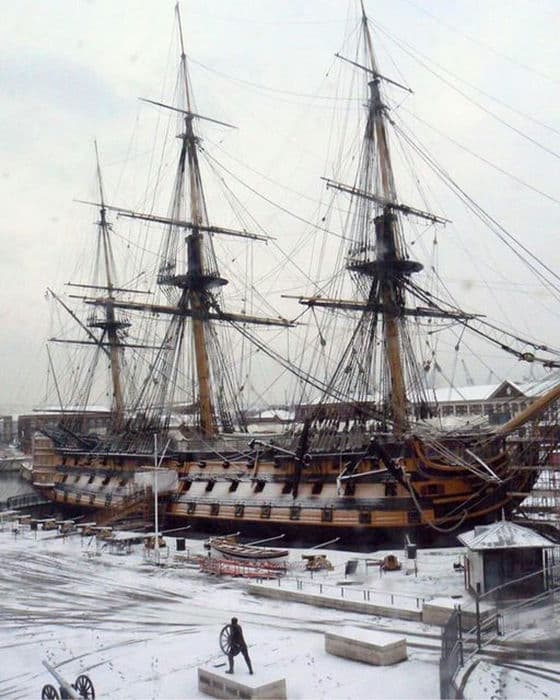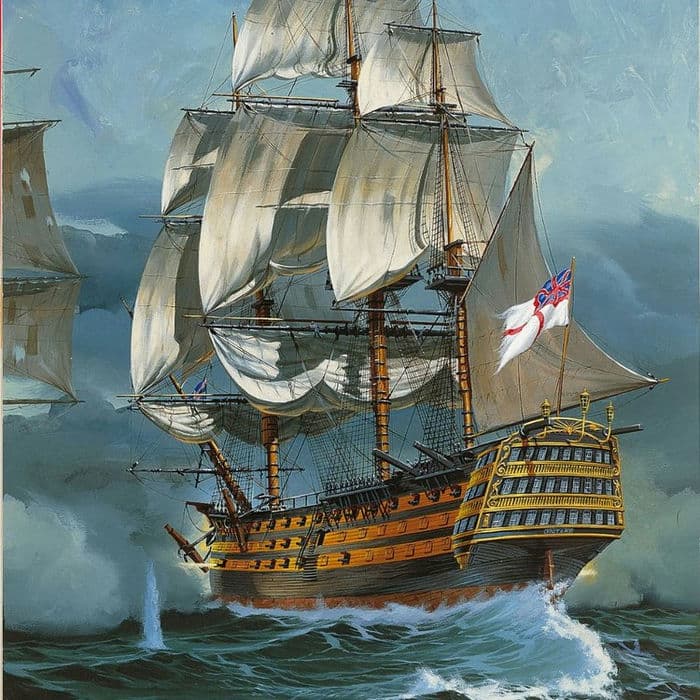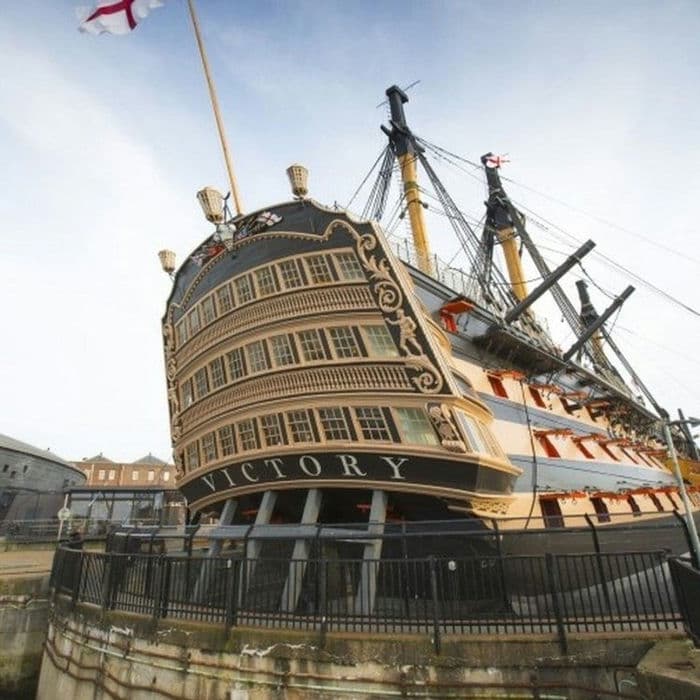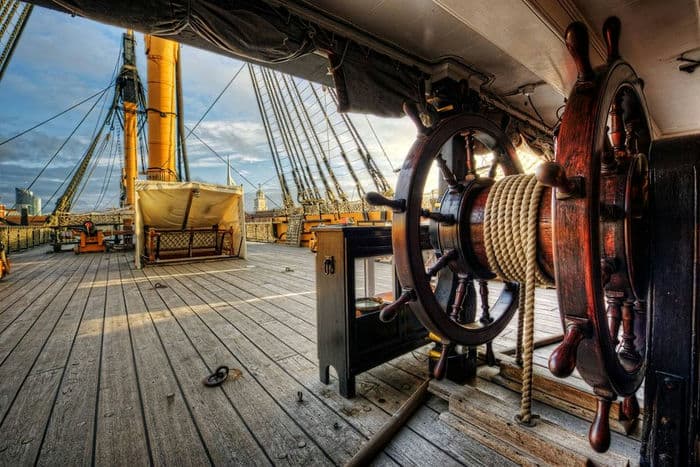Few vessels hold as much historical significance as the HMS Victory.

Commissioned in 1759 and launched in 1765, the HMS Victory is the oldest commissioned warship in the world. Designed by Sir Thomas Slade and built at Chatham Dockyard, it represented the pinnacle of British shipbuilding during the 18th century.

Over 2000 oak trees were used in its construction, equivalent to 60 acres of forest, at a cost of £63,176 (over £50 million today). Its innovative design, incorporating multiple gun decks, a sleek hull, and advanced rigging systems, set it apart as a masterpiece of naval engineering.

The HMS Victory played a crucial role in several key naval battles, most notably the Battle of Trafalgar in 1805, where Admiral Lord Nelson led the British fleet to a decisive victory against the combined Franco-Spanish forces. Although Nelson tragically lost his life during the battle, his legacy lives on in the resounding triumph of the Victory.

Life aboard the HMS Victory was a blend of discipline, camaraderie, and strategic planning. The ship’s crew, consisting of sailors, marines, and officers, lived and worked in tight quarters, following strict hierarchy and routines to ensure operational efficiency during lengthy voyages.

Today, the HMS Victory stands as a museum ship at the Historic Dockyard in Portsmouth, restored and maintained to offer visitors an immersive experience into the life and times of sailors from the past. Its interior provides a glimpse into the daily routines, living conditions, and strategic considerations that defined naval warfare in the 18th and 19th centuries.
With its storied history and remarkable preservation, the HMS Victory continues to inspire awe and admiration as a testament to Britain’s naval prowess and maritime heritage.
